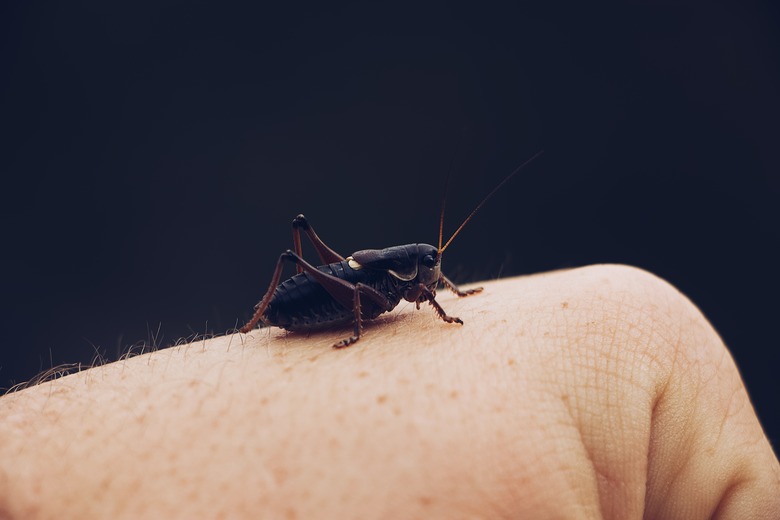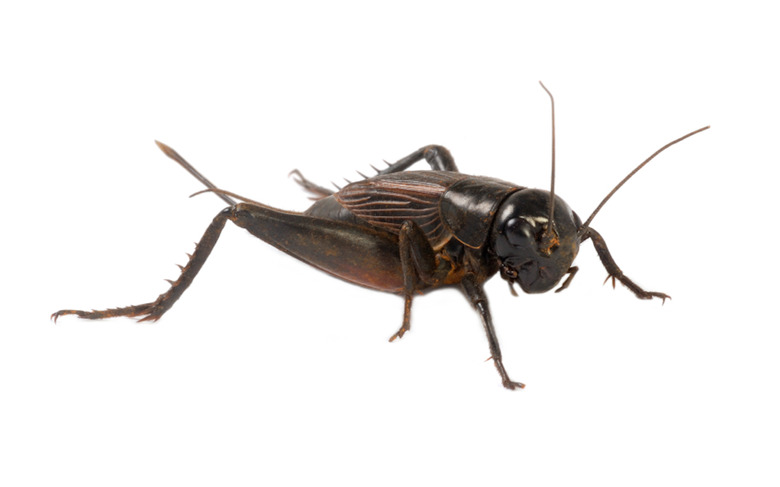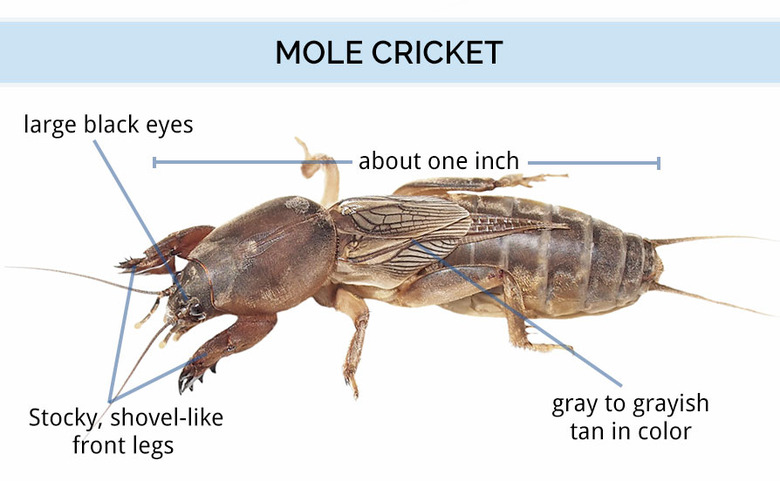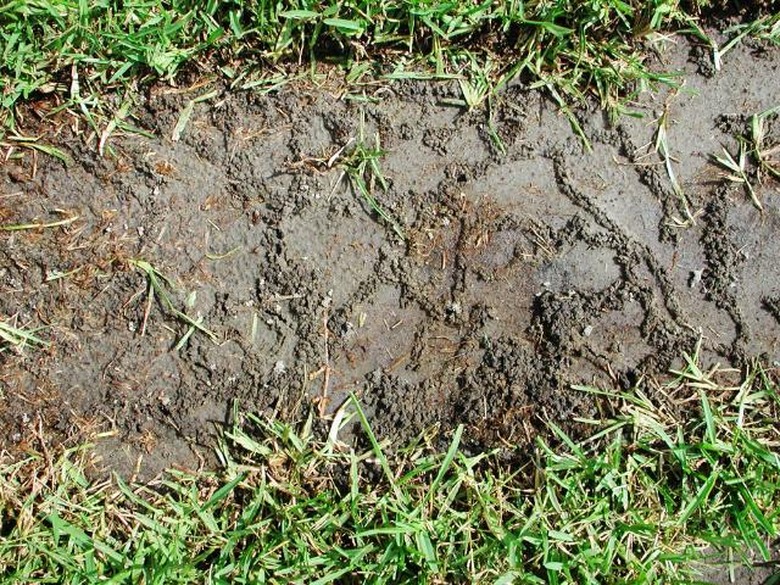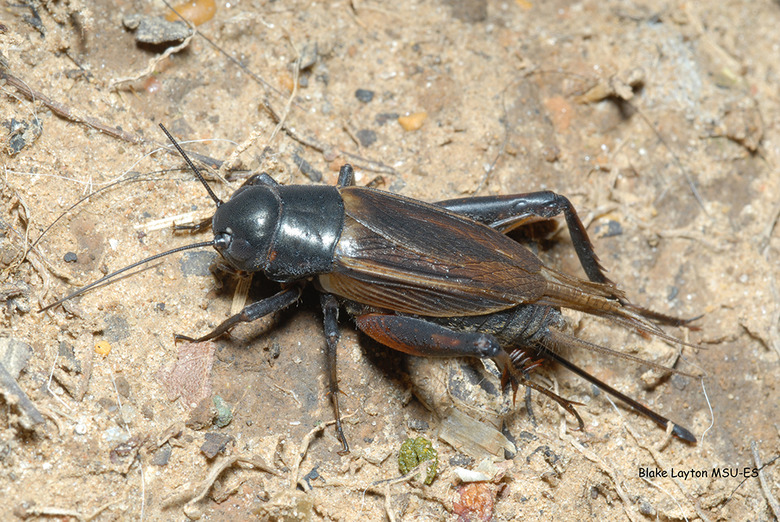How To Get Rid Of Crickets
There are roughly a dozen cricket species that inhabit North America, but only a few that are likely to create problems around your house. They include the house cricket (Acheta domesticus), the mole cricket (Neocurtilla hexadactyla) and the field cricket (Gryllus pennsylvanicus).
Generally speaking, the problems crickets cause are minor compared to those caused by other insects. Unlike cockroaches and other insects, crickets aren't unsanitary, and they don't bite. They don't carry disease, and there's only a small chance that they will infiltrate your food supply.
But the problems caused by crickets aren't completely insignificant:
- The loud chirping produced by males at night can be disturbing for anyone who has trouble sleeping (other people may find it pleasant).
- In large numbers, crickets can cause indoor damage, mostly by feeding on fabrics, furs, paper, leather, wood, and rubber.
- Crickets are also known to feed on wallpaper glue and drywall.
- Outdoors, feeding crickets can harm plant and vegetables. Mole crickets, like their mammalian counterparts, survive by burrowing in the soil. These crickets feed on grass roots and can kill the parts of your lawn in which they burrow.
Tip
The tone and frequency of field cricket chirping drop as the temperature drops. Count the number of chirps in 13 seconds, add 40, and you'll have the approximate outdoor temperature in degrees Fahrenheit.
Controlling House Crickets
Controlling House Crickets
The house cricket was introduced to North America from Asia in the latter part of the 20th century. House crickets are edible and considered a delicacy in some cultures, and people often breed them as pets or for feeding snakes, lizards and other animals. They chirp particularly loudly, though, and they do so only at night, when you're trying to sleep.
Naturally, house crickets are the ones you're most likely to find in your house. You could try to catch and kill them, but they are hard to spot. The best ways to control them are to remove anything that's attracting them and seal up your house so they can't get in.
- Run a dehumidifier in the basement and in damp closets to control moisture—one of the main cricket attractants.
- Look for gaps and cracks in baseboards, corners of walls, window and door frames, and in the foundation, and seal them with caulk. If any cracks are too wide to seal, spread DE (diatomaceous earth) around them. It lacerates the insects' bodies and kills them.
- Run the vacuum in any areas where you spot the crickets to remove their eggs.
- Remove mulch and debris from around your home's foundation to eliminate hiding places, then spread DE or another repellant, such as chili spray, around the foundation.
- Get one or two cats. Cats love to hunt for crickets, and they tend to be active at night when the crickets are also active. (Failing that, you could keep a pet garter snake and allow it to roam at night.)
Tip
If chirping crickets are keeping you up at night, you may be able to control the chirping by lowering the temperature with an air conditioner.
Mole Cricket Identification and Control
Mole Cricket Identification and Control
Although they aren't true crickets, mole crickets are about the same size, they make the same characteristic chirping sounds, and they also aren't dangerous. Ranging throughout the eastern and central United States, these crickets live almost exclusively underground and, like moles, are built for digging. Except for their chirping, you'd probably never notice them except for one thing: They eat grass roots and cause the plants to die.
A successful control strategy for mole crickets focuses on getting them where they live—in your lawn. The best time to do this isn't in the spring, when the lawn damage is most noticeable, because that's when the crickets are at their most hardy. It's best to treat the lawn when the cricket eggs hatch in mid to late summer. The two-step procedure is:
- Note lawn damage in spring. Map out the affected areas and make a diagram.
- Treat the affected areas with an insecticide in the summer.
You can use any one of a number of commercial insecticides that target mole crickets. Be sure to read the instructions for the proper coverage. Note whether or not the product should be applied to moist soil. If so, you'll want to water the lawn before application and—for some products—after application as well.
Handling Field Crickets
Handling Field Crickets
With a body that can be up to 1 inch long, field crickets look much like house crickets except for their coloration, which is dark brown or black compared to the light brown of house crickets. Field crickets don't often come in the house, and the main concern they present is damage to plants and crops—especially young ones. Large congregations of the insects can also create disruptions simply by dying and littering the ground with slippery cricket bodies.
Field crickets are attracted to light, so light management is a key to controlling them:
- Turn on outdoor lights only when necessary.
- Put shades on the fixtures and direct the light to only the places you need it.
- Swap out your all-purpose bulbs for sodium vapor lights or LED bulbs designed not to attract insects.
- Place light fixtures far from areas in which you don't want crickets to congregate.
Prevent field crickets from coming into your house by using the same exclusion strategies you use for house crickets. Seal gaps and cracks in the foundation as well as door and window frames and, if necessary, surround the house with a cricket barrier of diatomaceous earth or another deterrent.
You may have to rely on a commercial product containing pyrethroid insecticides to combat a large infestation. These products usually come in spray dispensers. Spray around the foundation of your house to prevent the insects from coming inside and spray around plants you want to protect.
Tip
If a male field cricket finds its way into your house and begins its mating call, you can find the interloper if you are patient. Move toward the sound until the insect stops chirping. Remain still until the insect starts chirping again, then move a little closer. Eventually, you'll home in the critter so you can catch it and release it outside.
